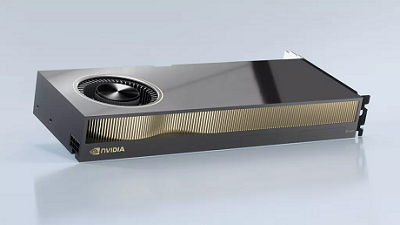When Nvidia launched its RTX A6000 48GB professional graphics card last October, the company said that it would offer at least twice the performance of the company's previous-gen Quadro cards. These types of claims are not unusual, but how fast is the $4,650 RTX A6000 really in real-world benchmarks? (Interestingly, that's only $650 more than Galax's flagship RTX 3090 GPU.) Workstation maker Puget Systems decided to find out and ran multiple professional-grade benchmarks on the card. Nvidia's RTX A6000 48GB graphics card is powered by its GA102 GPU with 10,752 CUDA cores, 336 tensor cores, and 84 RT cores, and a 384-bit memory bus that pairs the chip with a beefy 48GB slab of GDDR6 memory. In contrast, Nvidia's top-of-the-range GeForce RTX 3090 consumer board based on the same graphics processor features a different GPU configuration containing 10,496 CUDA cores, 328 tensor cores, 82 RT cores, and a 384-bit memory interface for its 'mere' 24GB of GDDR6X memory. While the Nvidia RTX A6000 has a slightly better GPU configuration than the GeForce RTX 3090, it uses slower memory and therefore features 768 GB/s of memory bandwidth, which is 18% lower than the consumer graphics card (936GB/s), so it will not beat the 3090 in gaming. Meanwhile, because the RTX A6000 has 48GB of DRAM on board, it will perform better in memory-hungry professional workloads. While all GeForce RTX graphics cards come with Nvidia Studio drivers that support acceleration in some professional applications, they are not designed to run all professional software suites. In contrast, professional ISV-certified drivers of the Quadro series and Nvidia RTX A6000 make them a better fit for workstations. Not all professional workloads require enormous onboard memory capacity, but GPU-accelerated rendering applications benefit greatly, especially when it comes to large scenes. Since we are talking about graphics rendering, the same programs also benefit from GPU capabilities. That said, it is not surprising that the Nvidia RTX A6000 48GB outperformed its predecessor by 46.6% ~ 92.2% in all four rendering benchmarks ran by Puget. Evidently, V-Ray 5 scales better with the increase of GPU horsepower and onboard memory capacity, whereas Redshift 3 is not that good. Still, the new RTX A6000 48GB is tangibly faster than any other professional graphics card in GPU-accelerated rendering workloads. Modern video editing and color correction applications, such as DaVinci Resolve 16.2.8 and Adobe Premiere Pro 14.8, can also accelerate some of the tasks using GPUs. In both cases, the Nvidia RTX A6000 48GB offers tangible performance advantages compared to its predecessor, but its advantages look even more serious when the board is compared to graphics cards released several years ago. Like other modern professional graphics applications, Adobe After Effects and Adobe Photoshop can take advantage of GPUs. Yet, both programs are CPU bottlenecked in many cases, which means that any decent graphics processor (and not necessarily a professional one) is usually enough for both suites. Nonetheless, the new Nvidia RTX A6000 64GB managed to show some speed gains compared to the predecessor in these two apps as well. More facts and figures along with possible pricing can be found on OUR FORUM.
